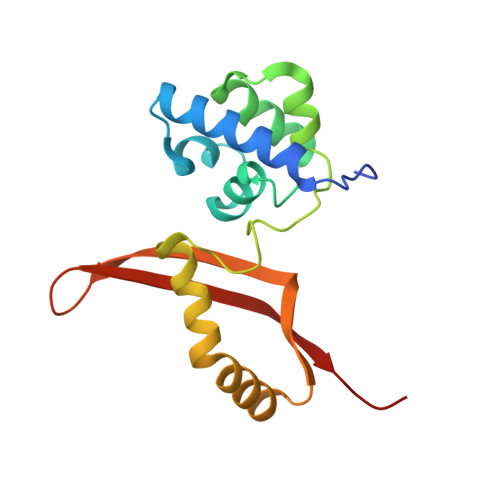Structural mechanism of Escherichia coli cyanase.
Kim, J., Kim, Y., Park, J., Nam, K.H., Cho, Y.(2023) Acta Crystallogr D Struct Biol 79: 1094-1108
- PubMed: 37971797
- DOI: https://doi.org/10.1107/S2059798323009609
- Primary Citation of Related Structures:
8K6G, 8K6H, 8K6S, 8K6U, 8K6X - PubMed Abstract:
Cyanase plays a vital role in the detoxification of cyanate and supplies a continuous nitrogen source for soil microbes by converting cyanate to ammonia and carbon dioxide in a bicarbonate-dependent reaction. The structures of cyanase complexed with dianion inhibitors, in conjunction with biochemical studies, suggest putative binding sites for substrates. However, the substrate-recognition and reaction mechanisms of cyanase remain unclear. Here, crystal structures of cyanase from Escherichia coli were determined in the native form and in complexes with cyanate, bicarbonate and intermediates at 1.5-1.9 Å resolution using synchrotron X-rays and an X-ray free-electron laser. Cyanate and bicarbonate interact with the highly conserved Arg96, Ser122 and Ala123 in the active site. In the presence of a mixture of cyanate and bicarbonate, three different electron densities for intermediates were observed in the cyanase structures. Moreover, the observed electron density could explain the dynamics of the substrate or product. In addition to conformational changes in the substrate-binding pocket, dynamic movement of Leu151 was observed, which functions as a gate for the passage of substrates or products. These findings provide a structural mechanism for the substrate-binding and reaction process of cyanase.
Organizational Affiliation:
Department of Life Sciences, Pohang University of Science and Technology, Pohang, Republic of Korea.




















